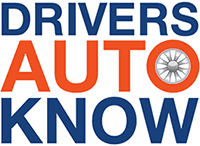The safety of self-driving cars is a topic that sparks curiosity and concern. While trusting a computer with mundane tasks like grocery store checkouts seems natural, the idea of entrusting it with the responsibility of driving raises valid questions about safety. So, are self-driving cars safe? Let’s explore further.
To understand the potential safety benefits of self-driving cars, let’s consider the most common causes – traffic accidents. Drunk and distracted driving are among the top dangers on the road, leading to thousands of fatalities and injuries each year. Statistics reveal a grim reality, with human error being involved in most accidents.
Enter self-driving cars, poised to revolutionize road safety by addressing human error. With autonomous technology at the helm, the risks associated with drunk and distracted driving diminish significantly. Picture a scenario where a person who’s had a few too many drinks can comfortably recline in the backseat while the car navigates them home safely. Similarly, distracted parents can focus on soothing a crying child without compromising safety, as the car handles the journey autonomously.
The magic behind self-driving cars lies in their advanced sensing capabilities, akin to Spider-Man’s “spider sense.” Equipped with systems like LIDAR (Light Detection and Ranging), self-driving cars can detect and react to potential threats with remarkable precision. Imagine a scenario where the car detects a slow-moving object, quickly identifies it as a child on a bicycle, and promptly applies the brakes to ensure their safety.
The LIDAR system, capable of processing a staggering 1.3 million readings per second, empowers self-driving cars to navigate complex environments with amazing precision. This hyper-awareness, coupled with swift decision-making capabilities, holds the promise of reducing accidents on the road.
Early signs suggest a promising future. There have been fatalities, make no mistake. However, as advancements in autonomous driving evolve, so too will our understanding of its safety implications. Stay Tuned.

